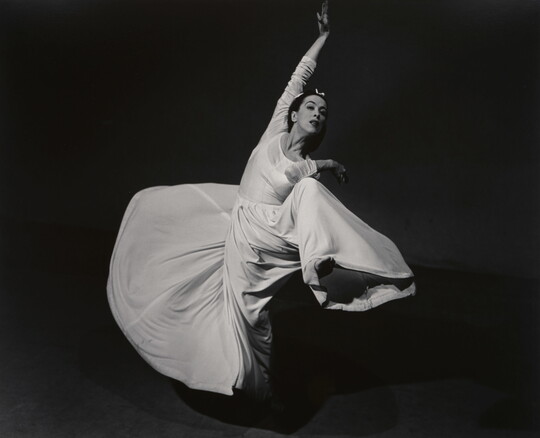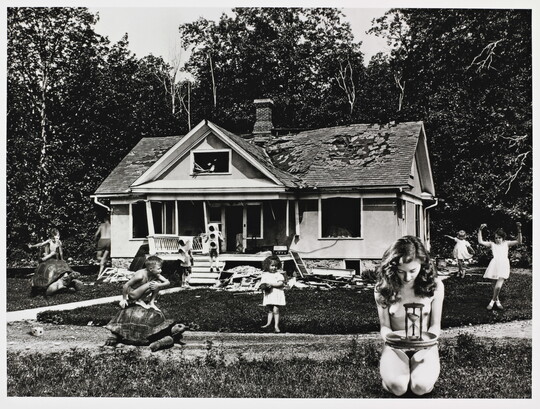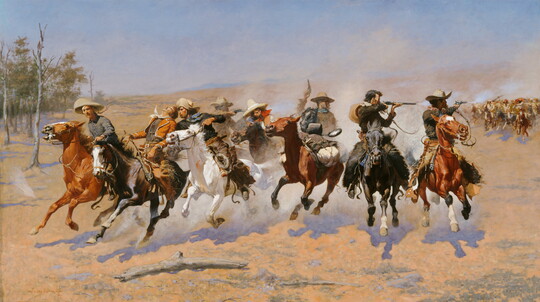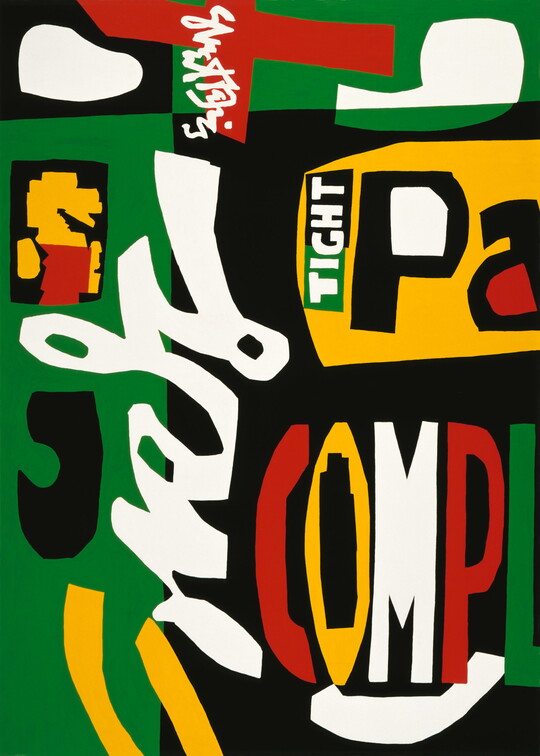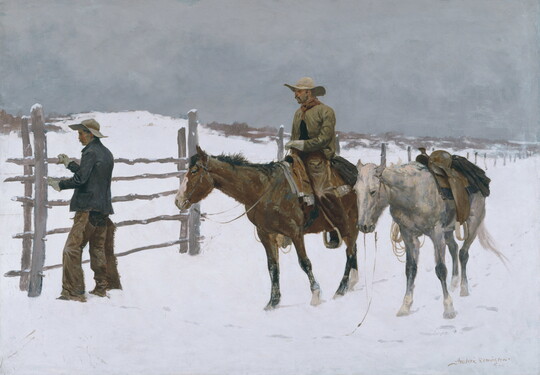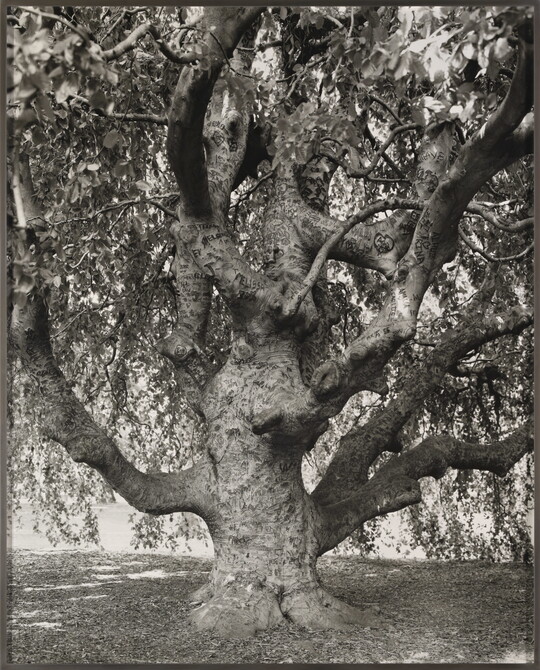



Artwork Images
Photo:
Controls
The Fisherman
Object Details
-
Date
1917
-
Object Type
Paintings
-
Medium
Oil on canvas
-
Dimensions
30 1/8 x 44 in.
-
Inscriptions
Recto:
signed, l.r. on rock pier: Geo. Bellows
Verso:
on stretcher:
-
Credit Line
Amon Carter Museum of American Art, Fort Worth, Texas
-
Accession Number
2016.9
-
Copyright
Public domain
Object Description
Although best known as a painter of gritty urban scenes, Bellows created more than 250 seascapes, most portraying the Atlantic Coast in Maine. But he turned his attention to the Pacific in 1917, when his family vacationed in the town of Carmel-by-the-Sea, California, on the northern tip of Big Sur. There, he created this work, one of his last major ocean paintings.
Bellows was fascinated by the bright colors of the Pacific, and he relied on a jewellike palette of brilliant blues, greens, purples, pinks, and ochres to render water crashing against a rocky coastline. He considered the sea one of the most challenging subjects to paint, and the lone angler maneuvering his line may symbolize the struggle of the artist as he grappled with his chosen subject.
—Text taken from the Carter Handbook (2023)
Additional details
Location: On view
See more by George Bellows
Tags
-
Gaining fame for his depictions of boxing matches and gritty New York City scenes, George Bellows was also known for another popular subject in his works—seascapes. This large, horizontally-oriented painting housed in a gold frame is one of his many examples.
Here Bellows depicts a lone, slender White fisherman standing on a rocky cropping that juts out into a choppy sea under a gray, cloud-covered sky. The man stands with his back to the viewer slightly left of center. He has a firm stance, separating his feet and planting his right foot on a rock that is a little bit higher than where his left foot stands. His left shoulder is dropped and his arm reaches toward the right, across his body; his left hand and wrist is visible on the right side of his body. His right arm extends up and out to the right. The fisherman’s right hand grips the middle of a bamboo fishing pole, while his left hand grips the bottom of it. The pole points to the top right edge of the canvas, and the tip of it slightly bends down, suggesting he’s caught something on his line, that is almost invisibly painted. The man’s head looks slightly to the right, only the back of his head and right ear is visible; his face cannot be seen. He wears a dark bucket hat with hair peeking out of the bottom on his neck, a light blue long-sleeved shirt, a reddish-tan vest, brown pants, and black, rubber waders that start under his buttocks.
The jetty the man stands on is in the foreground. It starts on the bottom right corner, spans across most of the bottom of the painting, and slants upward toward the left corner. It’s made of many large different brown, round, and smooth rocks. There are highlights on brighter spots on some of the rounded edges of the rocks and on the back of the man, indicating that the sun is shining from the left.
Crashing onto the rocks are vibrant blue and neon green waves, some of them capped with white froth. Large waves crest near the fisherman’s right foot and off of a tall rock on the left edge of the painting. The brush strokes and lapping waves suggest rough waters. The water stretches out to the horizon line.
Another smaller rock formation appears in the middle ground of the painting, rising out of the water. A larger one or possible coastline in the distance sits in the top third of the painting along the horizon line on the right. Three white lines resembling seagulls float not far above the horizon line on the left. The smoky, gray sky, with muted blues peeking through, gives the scene a heavy feel.
-
What does balance, or imbalance, contribute to a work of art?
How is the archetypal theme of human versus nature depicted in works of art?
What symbolic roles has the sea played in the artistic traditions of various groups and cultures?
How have attitudes about leisure and its place in society changed or stayed the same over time?
-
Grades 1–5
Ask students to imagine the sensory experience of this moment: how does the rock feel under their shoes? What sounds do they hear? What smells are present? Ask students to adopt the pose of the fisherman: What might be his next motion?
Grades 6–12
Ask students to consider a time in their own life when they struggled with something (athletic, academic, or personal). How did they find the balance to succeed or overcome it? Students will then create/design a way to show the balance between the difficulty of that situation and the growth that resulted from it.
Share Educator Resources
Amon Carter Disclaimer
This information is published from the Carter's collection database. Updates and additions based on research and imaging activities are ongoing. The images, titles, and inscriptions are products of their time and are presented here as documentation, not as a reflection of the Carter’s values. If you have corrections or additional information about this object please email us to help us improve our records.
Every effort has been made to accurately determine the rights status of works and their images. Please email us if you have further information on the rights status of a work contrary or in addition to the information in our records.
Related Works
-
Martha Graham - Letter to the World (Swirl), 1940
Barbara Morgan
Gelatin silver print
P1974.21.17
-
Untitled, 1970
Luchita Hurtado
Lithograph
1970.86
-
The Time Game, 2011
Jane Hammond
Gelatin silver print
P2011.29
-
Untitled #52, 2002
Laura Letinsky
Dye coupler print
P2007.3
-
A Dash for the Timber, 1889
Frederic Remington
Oil on canvas
1961.381
-
Blips and Ifs, 1963-1964
Stuart Davis
Oil on canvas
1967.195
-
The Fall of the Cowboy, 1895
Frederic Remington
Oil on canvas
1961.230
-
Weeping Beech, Brooklyn Botanic Garden, Brooklyn, 2011
Mitch Epstein
Gelatin silver print
P2012.13
-
A Closet Door, 1904-1906
John Frederick Peto
Oil on canvas
1983.158





